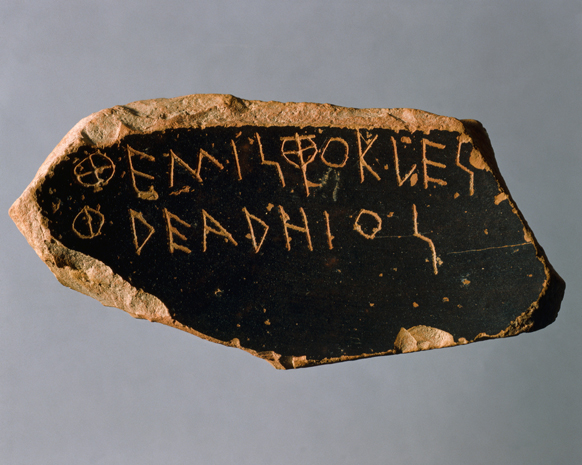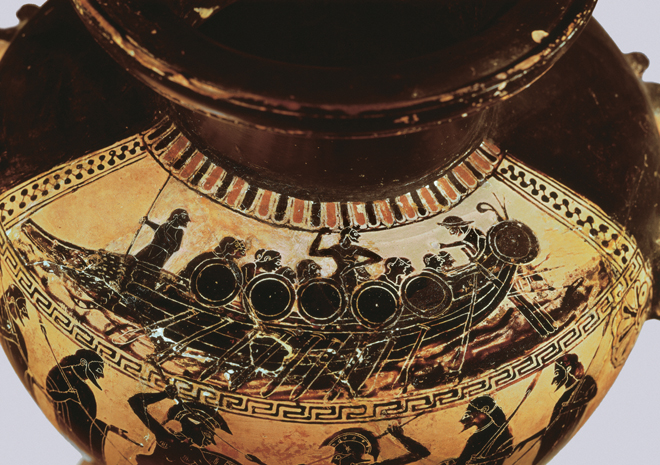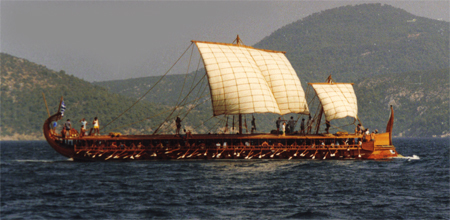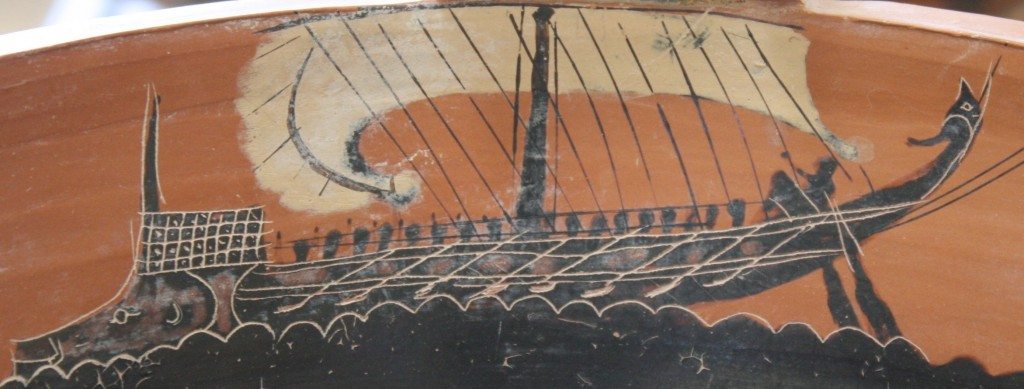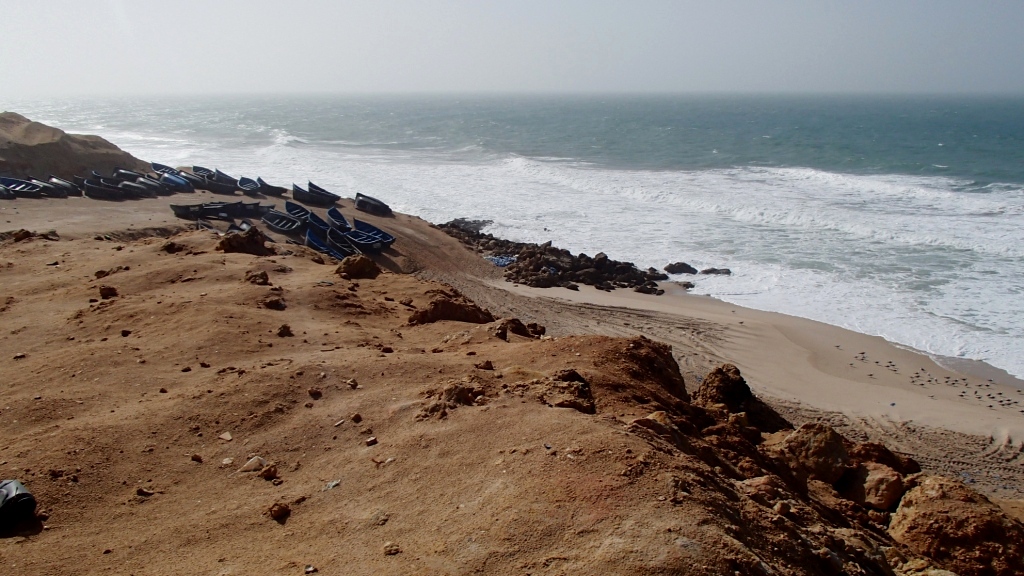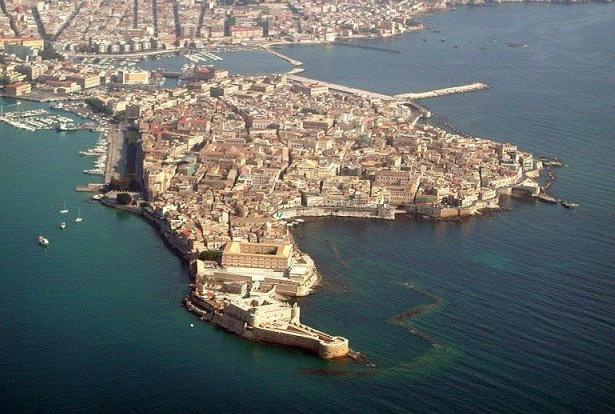Μηδίζω! THE WORLD OF ACHAEMENID HELLAS
CHAPTER 7: DRAYA or THALASSA
NAUTILOS: A HISTORY OF THE GREAT SEA by ANBAL HSH (1796 CE)
LOVE OF THE SEA
Crossing the boundaries of time and space, there is a fundamental link between all those who have fallen in love with the sea and the ocean. Its beauty, its power, its endless treasures, its ability to take you wherever you wish to go, how does one even begin? This indescribable connection to the brine is what binds the modern mariner to those who first discovered the means of moving upon the water’s surface for long distances. It is the principle quality that binds together the greatest of the peoples featured in this volume, where the love of the sea and love of senulogia meet. It is certainly the principal quality shared by the Qanane and Elene peoples in remote antiquity, the binding agent between these two great civilizations. In a time before time, when the Qanane found a poor but expressive people on the shores of the Aigean Sea, perhaps it was this that drove them to share the fruits of their earlier civilization, for even in this time the Elene told stories of heroic mariners, expeditions across the seas, and it would have been clear to Qadmos that this was a people born to the seas. Though we shall encounter many peoples of imagination, expression, and potency, it is these two peoples and their joint achievements which shall likely shine the brightest among this collection of jewels. But the love of the sea has struck many peoples of fame and achievement; Qors and Zard, the Tartiy, the Idonians, the Razna, the ‘Arni, Mazzile, the sea Ghotiy, and not forgetting the Maziqe. Let us begin our voyage through the past.
COINAGE OF THE ARKHAIT WORLD VOL. III: ILLYRIA (1601 CE)
ISSA
Founded by Syrakousai in the early *4th century BCE, as a practical means of bleeding off excess population. Issa was intended to control trade in the Ionian Sea, but was at first one of the poorer of the Illyrian Greek colonies due to the hostility of mainland Illyrians and the relatively small scale of Ionian traffic compared to other major trade routes. Its early issues were exclusively bronze, showing a basic coinage with the local hero Ionios and a dolphin bearing the characters IS, a number of these being overstamps of Korinthian coinage, or even Akhaimenid satrapal darics. Its first silver issues started to appear soon after the Amavadatid expedition into Italia, with the establishment of closer commercial relations between Hesperia and the Amavadatid dominions. These issues continued to feature the head of Ionios, alongside dolphins or nautiluses, until later issues were introduced with the head of Hermes and an image of falling Ionios, though the earlier silver issues were periodically revived.
As Issa’s mainland territorial acquisitions grew, and the Tinian Empire’s commerce expanded, the number of dies exploded along with the frequency and diversity of issues. Poseidon, Hermes, Ionios, Artemis, and Zeus all began to appear as obverse designs, with the nautilus, dolphin, octopus, tuna, falling Ionios, winged Nike, and seated Zeus all appearing as reverse designs. Shells, waves, curviform loops, glyphs, and celestial objects are all used as control marks. These *2nd century BCE-1st century CE issues have been found on dig sites and in hoards throughout Hesperia, Illyria, the southern parts of the Amber route, and the depths of the Istros regions. From the addition of new mint marks we can also see that, for the first time, Issa controlled more than one mint, likely having taken over the existing facilities at Herakleia and Pharos. This was the height of Issa’s territorial power.
The collapse of the Tinians does not at first appear in the coinage, and it was shortly afterwards that gold issues first started appearing from Issa’s mints, suggesting that Issa’s wealth was not impacted by the otherwise devastating end to the Tinian Empire. But it was not long before Issa’s territory was subordinated into the Koinon Hellenion, and at this time it began to issue federal Hellenic coinage. Its native habits did not entirely disappear, as its federal issues continued to use Ionios and the nautilus on the reverse, the latter often as a control mark, but this is the most immediate and visible change to Issa’s coinage in its history, its prior diversity of issues vanishing almost overnight, and a foreign symbology imposed on its coinage. In addition to IS its federal issues bore the legend TON HELLENON, and the obverse always bore the federal symbol of the Commonwealth, crowned Poseidon, either seated or in portrait. This continued with little variation until after the *3rd century CE collapse of the Koinon Hellenion. After two centuries of subsumation into the Commonwealth there was an interregnum for the polis, during which Issa’s native coinage was reissued, frequently overstamping federal coinage. Unlike poleis that continued to issue federal currency in this period, there seems to have been little in the way of fondness between Issa and their departed Hellenarkh overlords. Then the western Gothi made their serious incursions into Illyria and Far Makedonia, marking the next phase for Issa’s coinage.
One Raginareik established himself as the ruler of Issa, declaring himself to be Reik af Esha in *254 CE. The city, having been abandoned by its federal garrison, and in no position to defend itself, had surrendered willingly, and in the subsequent squabbles over Illyria Raginareik had emerged victorious. This established city with its mint played well into the Gothi desire to establish successor states to the Koinon, and Issa continued to issue its traditional currency, albeit with a legend on many of the coins saying BASILEOS RAGNARIKOU. This practice survived during the reign of Raginarith, Raginareik’s nephew. However, the Koinon of Ellenereik had now established itself out of Moisia, and it was not long before Raginarith’s small kingdom was absorbed into this growing imperial power. This again resulted in only small changes to the issue designs, with BASILEOS ELLENRIKOU replacing the prior legends, but it had a major impact on the scale of issues. Whilst the city itself was not grievously damaged by its capture, the traditional trade routes the city had relied upon had all been disrupted. Connections between Illyria and Hellas proper had been severed by the division of the Koinon Hellenion between Ellenereik and the Middle Iranian Empire, all of the interior of Europa was in flux through continued migrations, and Hesperia was now the only real trade partner that Issa retained, principally with Italia. Only a few silver issues, and no gold ones, are known between *270 and *316 CE.
This low ebb came to an end with the splintering of the original Germanik Koinon of *316, with the western Kingdom of Ellur gaining dominion over most of the Illyrian coast. This made Issa, now generally known as Isha, the commercial capital of a smaller polity once more. This was shortly followed by the foundation of the High Voii Kingdom in Hesperia, which gained dominion over the old Weneti lands. This re-established regular, secure trade across Middle Europa. Isha issues are once again found all over nearby regions dating to this period, and it was during this period that the nautilus became fixed as the symbol of the city and its power. The birth of the Europan rum trade in the late *4th century CE was what elevated Isha’s coinage from a regional currency to the status of pan-Europan ubiquity; the city was ideally placed to transmit rum refined in Sikilia, Kypros, and Kriti into the heart of Europa, along with the sugar itself. The issues of this period, high quality silver and gold, are found almost everywhere in Central and Eastern Europa, and contemporary sources frequently refer to the ubiquity of the nautilus coin, found wherever rum would flow.
It is this point that we cease speaking of the coinage of Issa/Isha as a Hellenic polis in the traditional sense, or of the Arkhait era. By the transition into the *5th century CE the Gothi and Hellenes of Isha had mixed enough that their early Helleno-Gothic patois had begun to develop into something more organised, and Isha’s identity began to align to what is now termed the Sea Gothi or Blue Gothi. Their civic and individual identity would remain strong, but they were now part of something neither Hellenic nor Gothic, though rooted in both cultures. It is still worth remarking, however, that the nautilus issues continued for many centuries afterwards, and a number of imitations emerged throughout Central Europa, particularly of the high quality *6th century issues designed to compete with the high quality coinage of Gothika. The ancient heritage of Isha, now generally known as Ish, has never been forgotten, in the realm of numismatics or elsewise.
FRAGMENTS OF POTAMOKLES OF THEBAI BY IREMINVOE OF ADRI (1335 CE)
THE SEA
11- ...know that the Athenians debate, in secret, whether their navy is their salvation or their oppressor, whether … against the Persians or abolish it and rid…
15- Flow like water through the troubles of life, for all its twists and turns a river will always reach the sea no matter what attempts to get in its way.
20- … the real power of the Akhaimenids in the Great Sea, more than the (king?), more than … armies was its naval power taken from the Hellenes and (Phoenicians) which rendered any… that sought to rebel cut off at… one could no more rebel against the King of Persia than a grain of (sand?) can rebel against a beach.
33- The Great Sea brings in congress all peoples that dwell upon and alongside it, and I wonder that one day it might be the seat of a new power instead of the ancient lands of Babylon and Assyria, for the nations that dwell in these regions are countless, strong in war, and bonded together through shared experience of the sea.
THOUGHT OF AKHAIMENID HELLAS (1590 CE)
POTAMOKLES OF THEBAI
Potamokles is chiefly important to history as one of the ministers of the Amavadatid bureaucracy between *c.332-320 BCE, but is more famous for his ascerbic and forthright remarks on Hellas, Persians, and policy in general. It is believed that the quotations and fragments we possess originate from a work that emerged in the late *4th century BCE, either written by Potamokles himself or compiled by someone attempting to take advantage of his famous wit. His blunt tone has come in and out of fashion many times across history, contributing to the fragmentary survival of the ur-Potamokles text. It was particularly unpopular with the Koinon Hellenion and the Middle Iranian Empire. His most recent revival was in *14th century Hesperia, where the Realist skhola was highly responsive to his direct manner, and his considerations of power on the Great Sea which aligned with their own ambitions.
The extant fragments of the time were brought together by Ireminvoe of Adri, who was at that point patronised by the main Realist players. His work fit with the desire of his patrons, to have a collection of Potamokles’ quotes for a given theme or occasion. This is why, despite assigning collection numbers to each fragment, he organised these by theme. This was a relatively early project from this famous arkhaist, deeply impressive in its scope and in his dedication to hunting out fragments of this nearly-lost arkhait voice. His translations fit with the general approach at the time, and with what his patrons wished to hear; though Ireminvoe’s skill as a skholar was immense, there are parts of his translation that we felt needed a fresh hand.
In the time since the collection was published there have been a number of important discoveries. Forgotten archives and libraries, misattributed quotations, a greater confidence with identifying ancient source material by authorial voice, all of these have contributed a number of additional quotations of Potamokles, and additional context for previously fragmentary ones. These are collected here for the first time.
We continue to utilise the numbers to which these quotations were assigned by Ireminvoe, basing them as he did on their rough date of discovery, though a number of these formerly fragmentary quotations are now more substantially attested, and have continued to use this skhema for new material uncovered these past centuries. The collection by theme, however, is particular to the esteemed Teuvoi’s methodology, and we instead prefer to utilise a khronologically organised list.
…
32 Anyone who trusts to the good behaviour of the Thessalians is a fool, anyone who rejects the assistance of the Thessalians is an utter idiot. Any mischief these men can and will produce is more than made up for by the skill of their cavaliers and their boldness in war, invaluable to any seeking to utilise the resources of Hellas in campaign. Anyone who provides them with equitable treatment, grazing rights, and the opportunity for warcraft will be their master, any who treat them poorly will wake to the thundering of hooves.
33 The Mesogeios, that great conduit between nations and peoples, may well one day become an equal to the ancient kingdoms of Babylon and Assyria in might and prosperity. Its multitude of peoples are warlike and hardy, and are disposed towards co-operation at suitable times. It would take a willpower of unparalleled determination, with force to match, but it can be done. See how Hellas’ resources, once organised and marshalled together, were enough to allow Amavadatos to take the Akhaimenids head-on and emerge victorious. The difficulty, of course, are the existing powers of the Mesogeios; Massalia, Karkhedon, Italia, Syrakousai. The naval might that would be required to overcome all of these simultaneously is scarcely possible to imagine, even the Great Kings’ navy would have been incapable of conducting the task. Perhaps it is better attempted over the long duree, overcoming one power at a time whilst the others are occupied with more pressing matters, so that by the time they realise their peril they are already outmatched and incapable of winning the campaign that follows.
34 In my humble opinion, kinnamon is the most overrated ingredient that has ever come into Hellas. The way it is added in mounds to recipes, you would think it was made of pure gold. In modest amounts it is an acceptable seasoning, but the desire to demonstrate wealth and taste produces kinnamon infused dishes which are scarcely edible, the spice sticking to the back of your throat like sand. The amount of treasure we would save were it not for the belief that this spice can cure all ills, and improve all dishes…
UNDERSTANDING BUDDHISME BY TORIC mp YULIO (1295 CE)
THE LOTUS
Of all the strange and wonderful things which links this community of ascetics, mystics, and skholars, the most unexpected to many is the image of the lotus. Eguept, Amide, Hinde, even in the heart of the Alfine mountains this symbol is common to them all. It is most common in the crescent connecting Eguept and Hinde through the Iranian lands, with Eguept considered to have the most beautiful of the sacred lotuses. They symbolise creation and purity, and also help indicate Buddhiste communities and families from disparate nations to one another. This likely originates in a traditional Hinde veneration of the natural plants that possess singular beauty. The active use of this symbol to demarcate Buddhistes specifically is also common practice in Hinde to indicate that the teachings of the Buddhe are respected a particular temple or household. In those other nations with a profuse quantity of Buddhistes, it is common even for those who do not follow the Buddhe to revere this symbol in a similar fashion. It is the idea and the image of the lotus that is considered sacred, the living plants are willingly consumed at times of need and want. To return to Eguept, as we have understood already it was by the sea that Buddhisme first arrived into these lands, primarily from the activities of their merchants alongside those of Arabia and the Hinde. But it was greatly remarked upon by the earliest missionaries to Eguept that it already possessed its own lotuses, distinct and different from those of Hinde but equally beautiful and native to those lands. It was taken as a sign that this nation would be particularly receptive to the message and way of the Buddhe, and Eguept is indeed the Kingdom of the Twin Lotuses, the most devoutly Buddhiste nation aside from Makidonia. The twin lotuses symbolise Eguept, its unity, its devotion, and its monarchy. It is thought that when the Earth was separated from the Seas, the Land of the Lotus was divided, so that part of it became Eguept, and part became Hinde, and part also became Han where the lotus is also found.